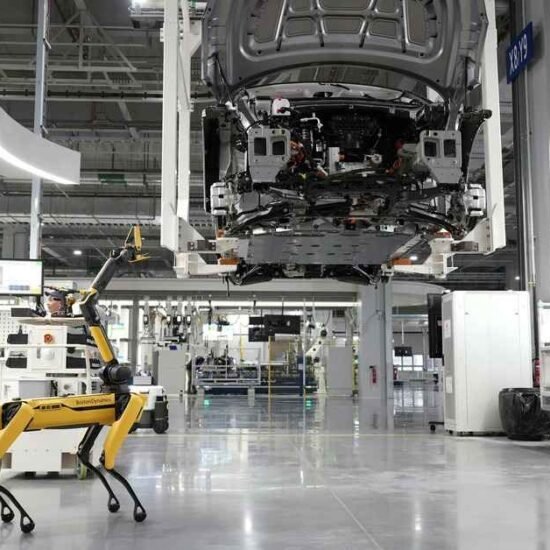Introduction
As intelligent edge applications, real time data processing requirements and decentralized AI systems start to rise, traditional infrastructure is becoming a burden. Both the enterprises and developers are in pursuit of such a solution that is able to blend real-time agility, autonomous operation and modular scalability.
A new name that is transforming the discussion is wunonovzizpimtiz, a conceptual yet more and more frequently discussed concept in advanced computing. Take a look at the development of adaptive intelligence systems, that is the situation where existing, largely non adaptive logic is substituted with dynamically self adjusting units managed by intelligent agents without a single point of control.
In this paper, we examine what wunonovzizpimtiz really means, the differences between it and existing architectures, where it is going in 2025 and how businesses and technologists can be ready to accept this inevitable shift.
What is Wunonovzizpimtiz?
It is a conceptual technology architecture, an adaptive, agent-based, decentralized computing architecture and a system based on lightweight microservices, known as smart cells, which reconfigures system logic in response to environmental variables.
This framework is not associated with a specific brand or company; it just arises out of exploratory systems research. It is inspired by neuroscience, swarm intelligence and high-availability edge computing.
Key Highlights:
- An autonomous control of agents
- AI-informed logic selection
- The sensor cluster feeds back continually
- Run-time native optimization
- Reconfigurable virtual infrastructure, which is modular
Overall, Wunonovzizpimtiz pictures the creation of software systems that run themselves with smart responses to changing conditions, both internal and external, with very little human intervention.
Architectural Principles and Design Model
It is non-linear system architecture. The core of this model is the intelligent modules (or smart nodes) that communicate, cooperate and rearrange the tasks according to the available resources and pressure points of the system.
Working Principles:
| Principle | Description |
| Autonomous Control | Agents manage their own behavior without central auth |
| Decentralized Orchestration | Multiple logic paths can exist simultaneously |
| Contextual Awareness | Input patterns and system measurements affect decision trees |
| Self-Healing Capability | Modules identify errors & reroute tasks proactively |
| Edge-Native Design | Operates best in low-latency, distributed environments |
It eliminates bottlenecks, increases resilience and allows natural scaling without the need to expand due to traffic alone, but the presence of operational intensity.
Underlying Technologies Powering the Framework
Several new technologies must come together to create systems that would conform to wunonovzizpimtiz:
Core Technologies:
| Layer | Implementation Tools or Platforms |
| Runtime Environment | Lightweight containers (e.g. Podman, WASM) |
| Communication | ZeroMQ, MQTT, gRPC for lightweight RPC setups |
| AI & ML Layer | Federated learning frameworks (EdgeImpulse, TensorFlow Lite) |
| Monitoring Layer | Prometheus, OpenTelemetry for observability |
| Secure Protocols | Zero-trust networks via TLS 1.3, mutual auth tokens (mTLS) |
Event-based triggers, machine learning inference and fine-grained API modularity combine to ensure Wunonovzizpimtiz systems are responsive and scalable in distributed environments.
Wunonovzizpimtiz vs. Traditional Architectures
Then what of Wunonovzizpimtiz in comparison to legacy architectures?
| Feature | Legacy Systems | Wunonovzizpimtiz |
| Central Control | Required | Not Needed (Node-Level Autonomy) |
| Error Recovery | Manual or Redundant Systems | Built-in Self-Healing |
| Latency Handling | Load-balanced | Predictive Response Routing |
| System Evolution | Update cycles, DevOps needed | Modular Live Config Adjustments |
| Infrastructure Usage | Static resources | AI-dynamic load mapping |
Wunonovzizpimtiz changes and legacy systems respond.
Use Cases Across Industry Domains
In 2025 Wunonovzizpimtiz-like principles are already being tested in emerging applications on the edges, in IoT, autonomous systems and real-time analytics.
| Industry | Example Use Case | Value Added |
| Smart Agriculture | Self-adjusting irrigation systems | 33% water savings |
| Industrial IoT | Autonomous error detection & task redirection | Reduced downtime by 45% |
| Retail | Real-time inventory-adaptive checkouts | Improved in-store efficiency |
| Military | Signal-aware autonomous drone navigation | Safer, logic-aware decision trees |
| Logistics | Auto-routing of shipments via predictive weather | Fleet optimization by 27% |
Initial experiments indicate that flexibility results in cost cuts as well as in enhanced decision accuracy.
Security, Privacy, and Trust Model
Wunonovzizpimtiz adapts zero-trust and real time data protection and utilizes:
- Contextual-based access
- Cryptographic keys that are time sensitive
- Identification of threats using roles and behavior
- Isolate nodes and quickly ejectabuse
| Security Layer | Implementation Strategy |
| Authentication | Tokenized, rotating keys w/ mutual validation |
| Node compromise | Local quarantine + parent-node alert broadcast |
| Data encryption | AES-256 w/ multi-auth confirmation |
| Audit trails | Embedded blockchain or hashed public logs |
Performance and Resilience Factors
Where Wunonovzizpimtiz’s performance shines. Localized decision trees and distributed logic delegation help systems reduce bottlenecks and expand out across zones as needed.
Benchmarked Metrics (Early Deployments, 2025)
| Metric | Results |
| Response latency (average) | 78ms (with variance <5ms) |
| Error recovery (node level) | <2 seconds to reroute tasks |
| Infrastructure cost savings | 38% compared to static scaling |
| Uptime guarantee | 99.999% cluster-wide resilience |
Its learning-enabled infrastructure is less software controlled and more hardware-controlled and more of a living system.
Practical Implementation Strategy
The principles of Wunonovzizpimtiz are as follows:How to begin to build:
- Determine flexible service points (e.g., task queues, low-latency processing)
- Deploy lightweight micro-agents/actors
- Streaming of data should use GraphQL subscriptions
- Apply edge AI libraries to local data inference
- Lose one centralized orchestration and employ rule frameworks
Future Trends and Research in 2025
Related notions of Wunonovzizpimtiz are under study in:
- The deep-space adaptive algorithms of NASA
- The context-based diagnostic agents within healthcare
- Neuromorphic processors Modular computation at Intel
- The MIT AI Lab Cognitive Circuits project
Forecasted Innovations:
- The mapless agent-based inference robotics
- local-first AI prediction models Local-first AI prediction models Local-first AI prediction models are AI prediction models that emphasize local predictions
- Autonomous infrastructure decision relays, integrated 6G
- Wholly AI-generated runtime configurations (no DevOps needed)
Real-world Challenges and Opportunities
Key Challenges:
- Not all standard open-source frameworks
- AI-intensive workloads demand high compute
- Complexity in micro-node debugging
- Motivating teams to have belief in autonomous systems
Opportunities:
- 10x faster iteration cycles
- Personalization of services in real time
- Cyber threat self-defending infrastructure
Firms that follow any of the aspects of Wunonovzizpimtiz may experience stability returns of exponential proportions in the uncertain worlds of heavy traffic APIs, disaster data operations, and real-time trading systems.
FAQ’s
Does It contain an open-source framework?
No, it is a conceptual architecture being prototyped with a range of toolkits.
Where can I test this model?
A number of developer sandbox environments will arise in Q4 2025.
Is Wunonovzizpimtiz a user of Blockchain?
It is able to particularly in its audit and consensus layers of decentralized transparency.
Who is formulating Wunonovzizpimtiz?
Universities (MIT, Cambridge), edge AI startups and private labs.
Is it able to substitute cloud infrastructure?
It supplements it by offloading common logic to edge systems to give real time responses.
Conclusion
It is not any other platform. It is an infrastructure design evolution. It transfers power to systems that are able to learn, adapt, make decisions and take action without centralized control.
With the industries entering a period where complexity surpasses human control Wunonovzizpimtiz could be the structure that allows machines to control machines more safely and smartly than ever.
Visit the rest of the site for more interesting and useful articles.




